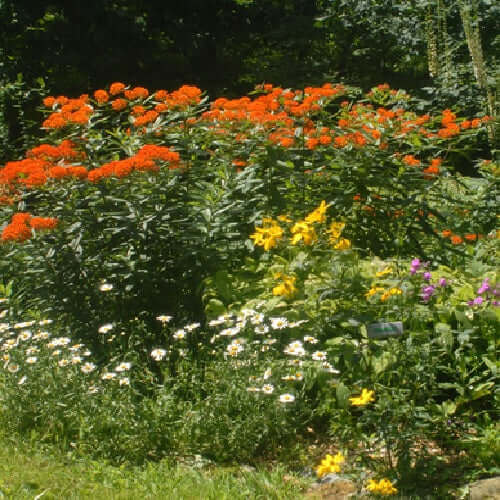Establishing and growing perennial plants in your garden can be rewarding and relatively low-maintenance
Here are some steps to help you successfully develop perennial plants:
Choose the Right Plants:
Perennial plants suitable for your climate, soil type, and available sunlight. Consider factors like hardiness, water requirements, and the amount of space available for growth.
Plan the Layout:
Determine where each perennial plant will be placed. Consider the plants' mature size and growth habits to ensure enough space to thrive without overcrowding.
Dig the Planting Hole:
Dig a hole slightly broader and deeper than the root ball of the perennial plant. Planting: Place the perennial plant in the hole so that the top of the root ball is level with the soil surface. Fill the gap with soil, gently firming it around the roots to remove air pockets.
Watering:
Thoroughly water the newly planted perennial to ensure good root-to-soil contact. Regularly water during the establishment period, keeping the ground moist but not soggy.
Mulching:
Use organic mulch around the base of the plant. Mulch helps retain moisture, suppresses weeds, and insulates the soil, providing a favorable environment for root growth.
Provide Adequate Care:
Regularly monitor the plants for water needs, especially during hot and dry periods
Water deeply when necessary, allowing the soil to dry slightly between watering. Fertilize the plants according to their specific requirements, usually in early spring or late fall.
Pruning and Maintenance:
Prune the plants to maintain their shape, remove dead or damaged growth, and promote healthy growth. Follow the pruning guidelines for each perennial plant, as some may require different approaches.
Monitor for Pests and Diseases:
Check for pests or signs of diseases on your perennial plants. Identify and address any issues promptly to minimize damage to the overall health of your garden.
Following these steps, you can establish a beautiful perennial garden that will continue flourishing for years.
Remember to consider the needs of each plant and adjust your approach accordingly
Try Raised Bed Perennial Gardens
While raised beds have traditionally been the domain of the vegetable gardener, perennial plants such as Daylilies, Hosta, Virginia Bluebells, Columbine, And Dutchman's Breeches have much to recommend them to this type of garden. All thrive under the favorable conditions of a raised bed, and each species has its own unique features which make them perennial favorites.
Daylilies could easily fill a raised bed all by themselves. They come in a range of sizes and enticing colors, and bloom from early June until September. There are even evening blooming varieties for when you want to linger on the patio on those warm summer nights.
Although the individual blooms only last a day or so, a good variety will have tons of blossoms over a long period. The blooms can range in size from 3 to 5 inches, and be either round or triangular in shape. They can be planted, or transplanted, at any time during the growing season, although spring is the best time to rework the beds of these forgiving plants.
You could fill several raised beds with Hosta and never run out of choices. While not especially noted for their bloom, the hostas come in so many sizes and shapes that their inclusion in the raised bed perennial garden is almost mandatory. More so if your raised bed occupies a shaded location. Hostas appreciate the good drainage and rich soil a raised bed affords them. Again, spring is the best time to divide and transplant these hardy plants.
Both these plant species make excellent choices for a raised bed all by themselves but your garden will go from interesting to amazing if you mingle other perennials amongst them. This is where early blooming plants come into their own.
Virginia Blue Bells, with their clusters of flowers on coiled stems, spring to life in early April. Typically grown in drifts, in naturalized gardens, they are equally at home grown in clusters in the raised bed garden. They add early season texture and color at a time when the summer blooming plants are still getting their act together.
Just when the bells are starting to fade, along comes the lovely Columbine. With showy, bell shaped, spurred flowers, in colors that range from white to blue to pink, red and pale green hanging above lacy foliage, they contrast beautifully with the more sturdy foliage of our other perennials. Although the plants aren't noted for longevity, they self-seed freely.
Dutchman Breeches is a fine choice for mixed perennial plants in the raised bed garden. Like the others, it appreciates the same conditions while providing it's own special charms. Another early spring bloomer, Dutchmans Breeches is a great choice as a companion for other shade loving plants.
Mixed together, or grown individually, Daylillies, Hosta, Virginia Blue Bells, Columbine, And Dutchmans Breeches are among the best choices in perennial plants for your raised bed garden.
